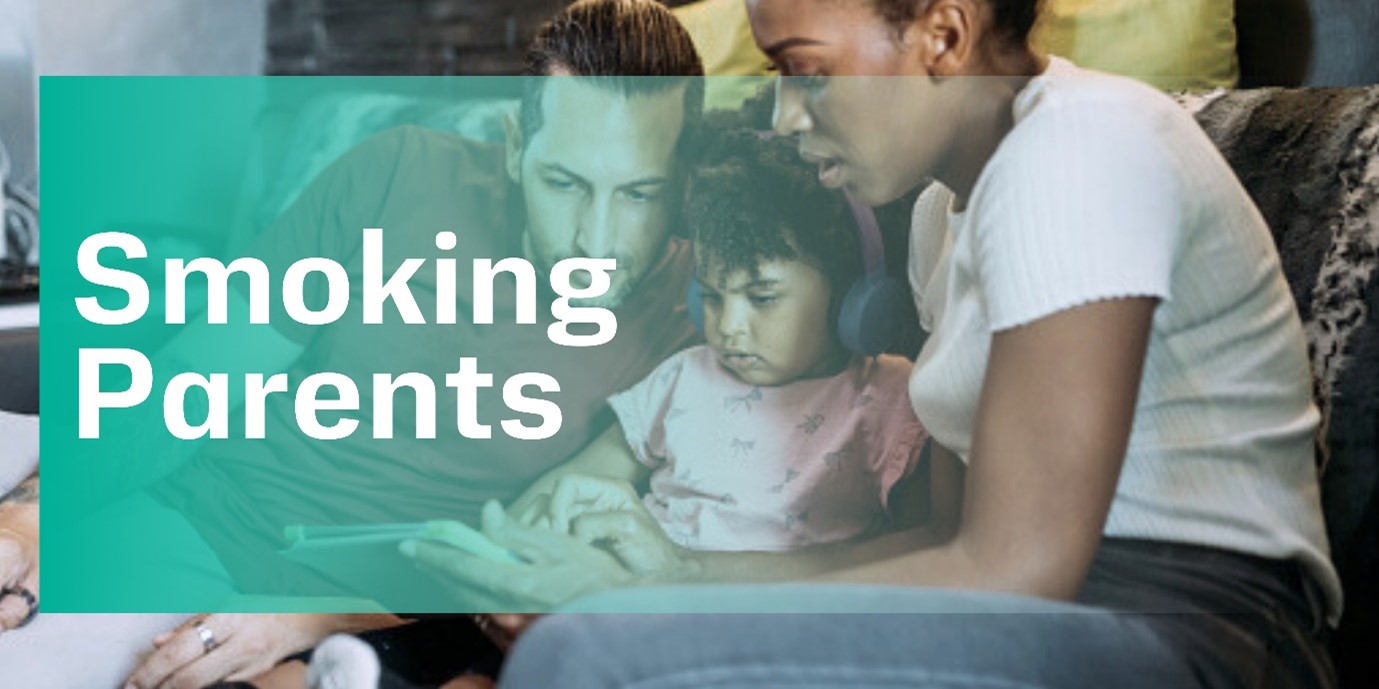
Quick links
Communicating the harm of second and thirdhand smoke
When conveying the risks of smoking around children to parents, it can be helpful to inform them of some key facts:
- Exposure to secondhand smoke increases a child’s risk of invasive meningococcal disease, ear infections and asthma, and could even increase the risk of some types of childhood cancer.
- It increases a baby’s risk of lower respiratory tract infections such as flu, bronchitis, and pneumonia by around 50% – with an estimated 20,000 cases of lower respiratory tract infections each year in the UK thought to be caused by secondhand smoke.
- Secondhand smoke is also thought to be responsible for one-fifth of all sudden infant deaths in the UK1.
There is no ‘safe’ way to smoke around children or pregnant women. Opening a window does not protect them from secondhand smoke, nor does limiting smoking to one room, as it spreads easily throughout the house, is invisible and can linger in the air for two to three hours2.
The best way parents can protect their child from the harms of secondhand smoke is to quit smoking completely. If they are not able to quit, the NHS and other experts advise that they should:
- Always smoke outside. It’s not safe to smoke in the same room as others, however far away.
- Ask any visitors or other household members to smoke outside.
- Never smoke in the car or allow anyone else to – you can remind them it is illegal to smoke in a car when a child is present2,3.

Thirdhand smoke
A lot of parents may not have heard of thirdhand smoke: toxic gases and particles that cling to surfaces like clothing, upholstery, and floors, and that linger long after secondhand smoke has gone1. Studies have even shown that thirdhand smoke can be present two months after a smoker has vacated their property, even after recarpeting and repainting5.
What’s more, new parents should be especially mindful of thirdhand smoke, since babies and toddlers will be crawling over, touching, and mouthing many objects and surfaces around the house4.
As with secondhand smoke, the best way parents can protect their child from thirdhand smoke is by completely quitting smoking. If this isn’t possible, then as well as the steps outlined above regarding smoking outside and never smoking in the car, parents should do the following:
- Frequently wash hands, and always wash them after smoking.
- Change clothes when coming back inside after smoking.
- Try and keep the home as free from dust as possible, as babies consume up to a quarter gram of dust per day (twice as much as adults).
- If they live in a shared space, ask other residents not to smoke indoors.
Relapse prevention
Bringing up small children can be challenging, so adding quitting smoking and staying smokefree on top can be even tougher. It should be acknowledged that while relapses may occur, setbacks do not mean failure, so rather than dwelling on it, parents should draw a line under it, move on and try again. New mums in particular may need support around relapse prevention, as up to 63% of women who quit smoking during pregnancy will relapse within six months post-birth1.
NICE advises healthcare professionals to openly discuss ways of preventing relapse at an early stage and at each point of contact2. Coping strategies you could discuss with parents who smoke include creating distractions, removing things from the home that remind them of smoking, such as ashtrays, and telling friends and family they have quit and asking for their support.
Top tips to creating a smokefree home
Second-hand smoke is invisible lingers and drifts through homes, so even if children are not in the same room, they can still breathe in the harmful chemicals.
Quitting smoking is the best way to create a smokefree environment.
If that is not possible then smokers should:
-
Only fully smoke outside and away from children
-
Ask visitors or other household members to smoke outside
-
Keep an umbrella by the door for bad weather to help avoid smoking indoors if it is raining
-
Know that smoking by an open door or window does not reduce harm
-
Wash hands and change clothes when coming back inside after smoking